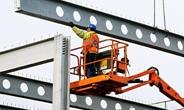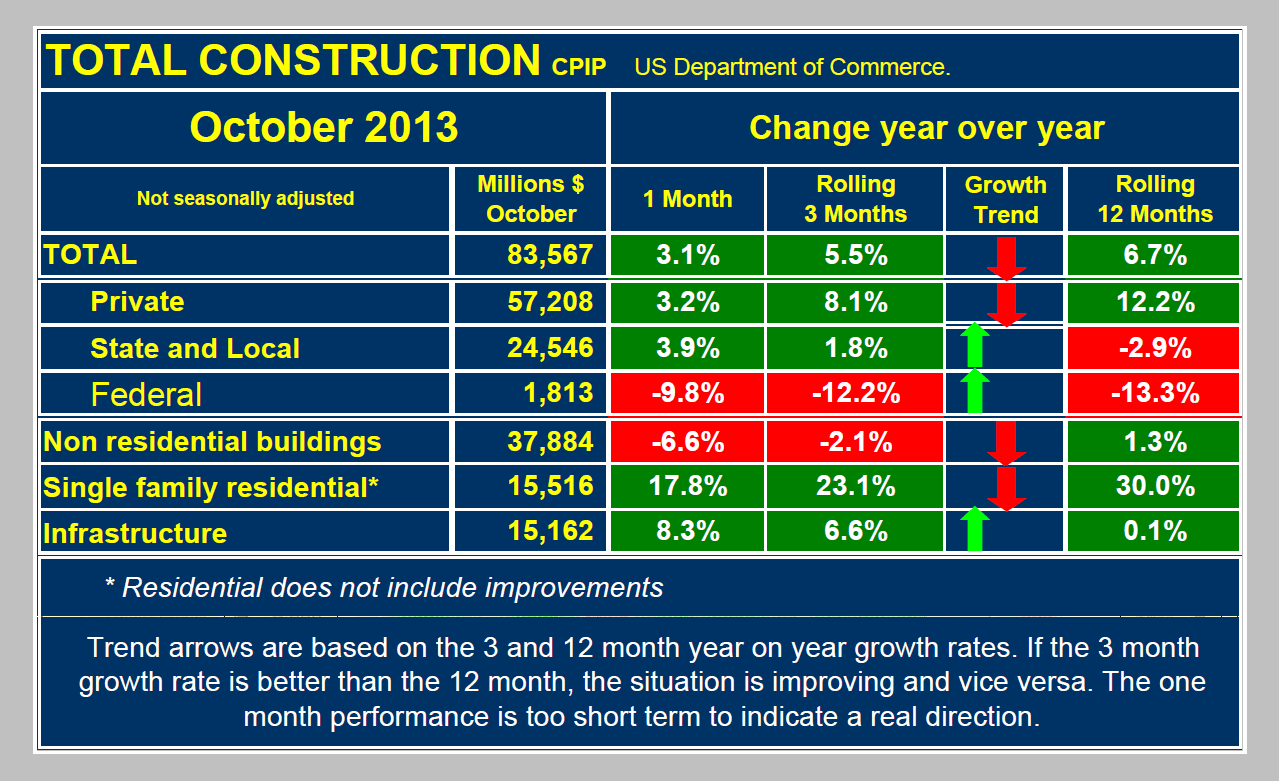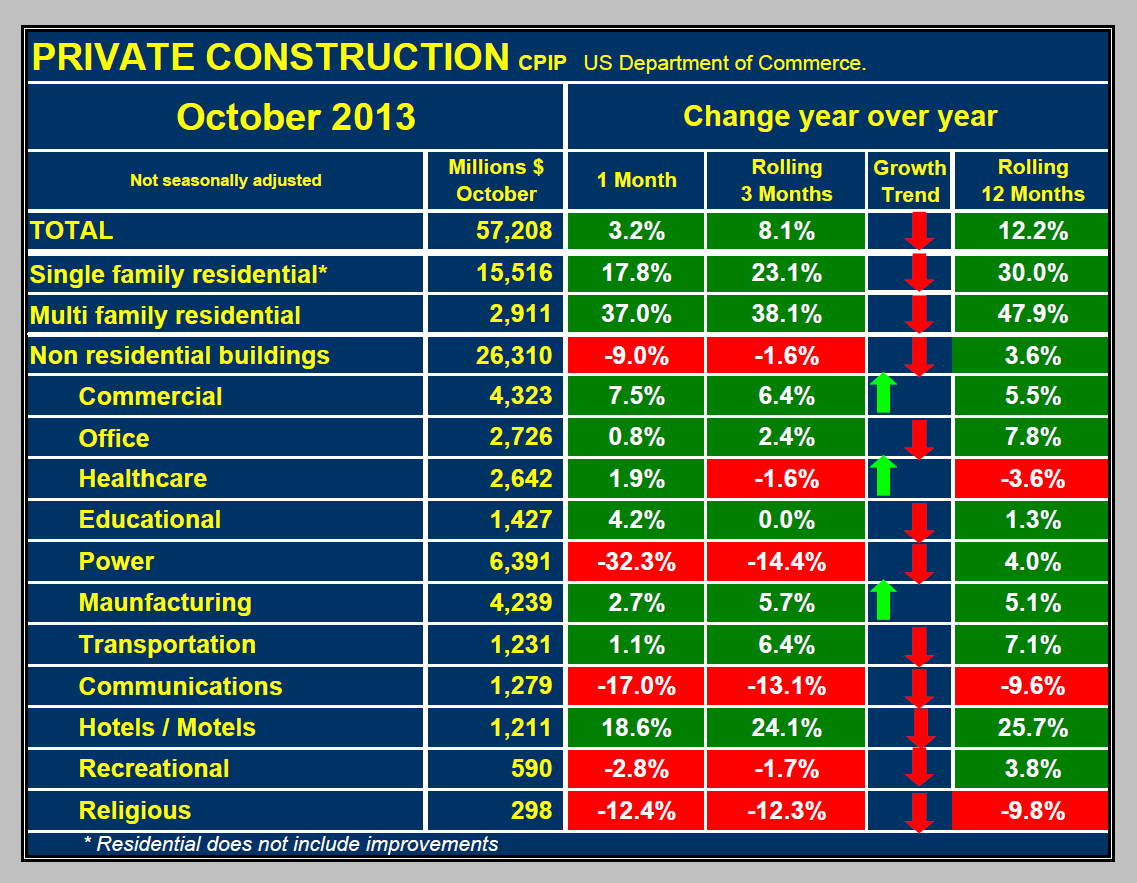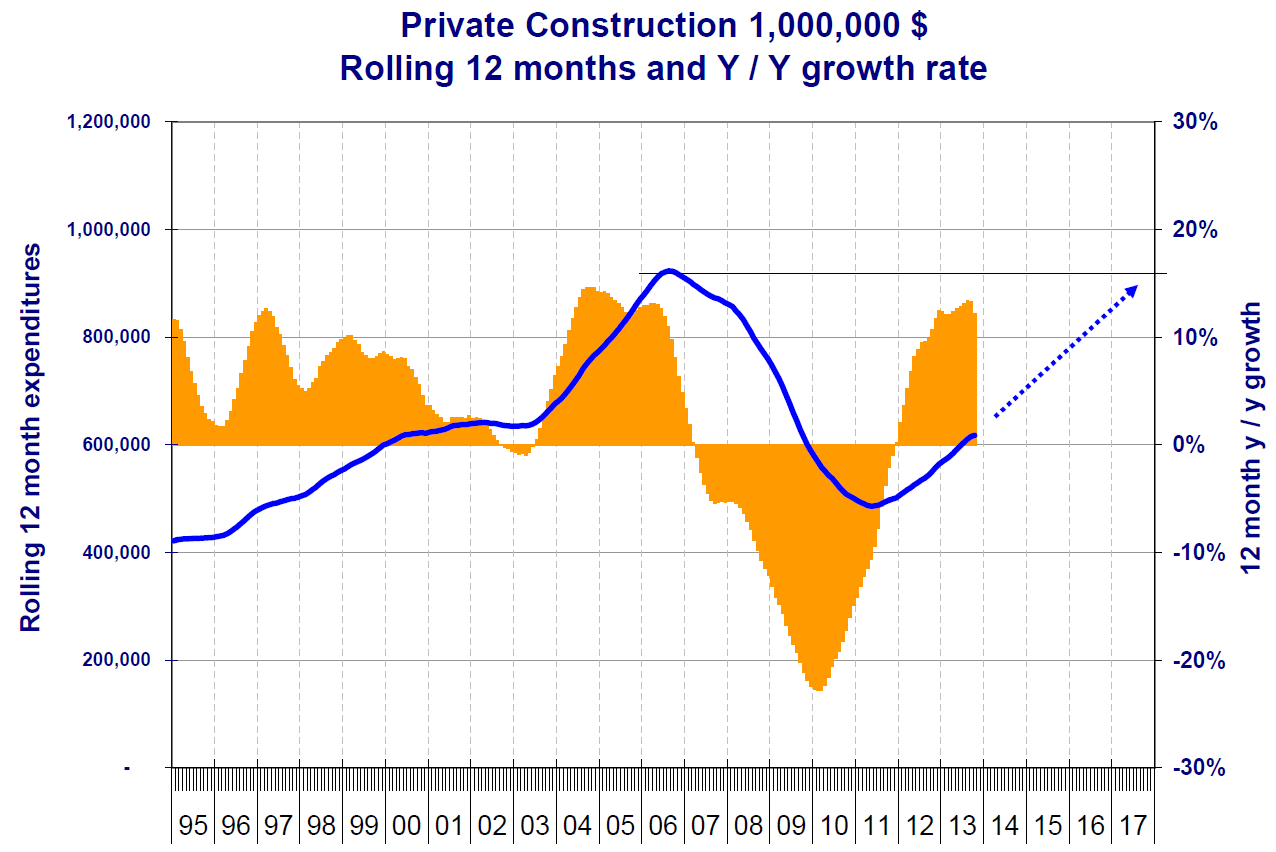Steel Markets

Construction Value Put in Place (CPIP)
Written by Peter Wright
December 9, 2013
Commerce Department data through October 2013. Focus on private construction.
The Commerce Department compiles their information based on the source of financing. These categories are, private, state + local and federal. There are a huge number of sub categories in the private and state + local construction expenditure categories, not so many in federal where expenditures are minimal. At Steel Market Update we combine these sub categories in-order to produce a comprehensive report each month.
In October, total construction expenditures were $83.567 billion of which 68.5 percent was privately funded, 29.4 percent was state and local and 2.2 percent was federally financed. Of the total expenditures, 82.04 percent, (October only) falls into three major categories. Non residential buildings accounted for $37.844 billion, down 2.1 percent from 2012 on a three month moving average basis (3MMA). Single family residential was $15.516 billion; up 23.1 percent 3MMA year / year and infrastructure was $15.162 billion, up by 6.6 percent 3MMA year over year (Table 1). Total construction in October was up by 3.1 percent compared to October last year, (y / y), on a rolling three month basis construction grew 5.5 percent y / y and on a rolling 12 month basis growth was 6.7 percent y / y. The three month growth rate was less than the 12 month growth rate meaning that momentum was negative and growth slowed slightly in the last three months.
There is no point comparing construction statistics one month or one quarter after another as the results are so seasonal that such a comparison is meaningless.
In October on a 3MMA basis year over year private construction grew by 8.1 percent. Single family residential grew by 23.1 percent, multi family residential by 38.1 percent and non residential contracted by 1.6 percent. This was the first contraction in non residential in 27 months and may be revised upwards at a later date because even though the starts data published by McGraw Hill Dodge has slowed, starts have come nowhere near negative growth. The residential results are in line with the housing starts data of the first five months of 2013. Since then starts of both multi and single family have declined. This change will show up in the CPIP data in the next few months. Table 2 shows private construction by sector. Ten of the thirteen sub sectors have negative momentum. Commercial, healthcare and manufacturing buildings are all strengthening.
On a rolling 12 months basis, total private construction has been expanding since November 2011 and in the latest 12 month period grew by 12.2 percent. A double digit growth rate has been sustained for 13 straight months (Figure 1), but even so at the present rate it will be late 2017 before recovery to the previous peak is achieved.

Peter Wright
Read more from Peter WrightLatest in Steel Markets

Worldsteel: Global steel demand flat, but modest rebound forecast for 2026
The World Steel Association (worldsteel) Short Range Outlook for global steel demand predicts that 2025’s steel demand will clock in at the same level as in 2024. In its October report, the Brussels-based association stated that this year’s steel demand will reach ~1,750 million metric tons (mt). The organization forecasts a 1.3% demand rebound in 2026, pushing […]

CRU: China’s indirect steel exports find new destination markets
The boom in China’s direct steel exports has not stopped this year, even with a rise in protectionist measures globally. The increase is driven by...

Great Lakes iron ore cargoes down in September as Cleveland tonnage slips
Iron ore shipments from US Great Lakes ports fell sharply in September, per the latest from the Lake Carriers’ Association (LCA) of Westlake, Ohio.

HVAC equipment shipments down through August
Although total HVAC shipments fell in August, YTD volumes remain relatively strong. Nearly 15 million units were produced in the first eight months of the year, the fourth-highest rate in our 19-year data history.

Sheet market sources slam tariffs for prolonged demand slump
Tariffs are ultimately to blame for stagnant demand in the hot-rolled coil market, domestic market sources tell SMU.



